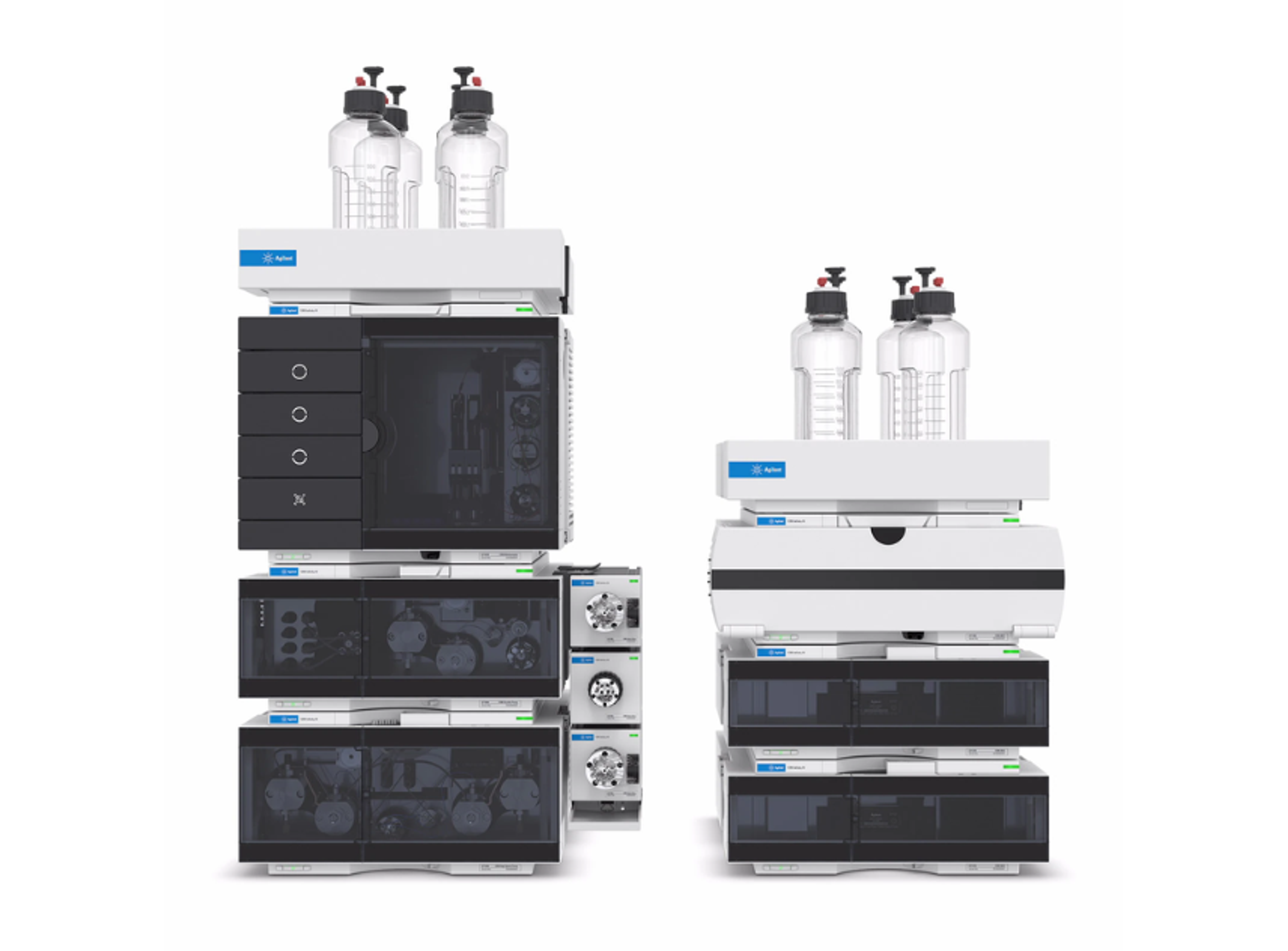Everything you ever wanted to know about HPLC columns – part 2
The second in our 3-part series of articles answering your questions on column lifetime and performance focuses on the chromatographic separation of peaks and the selection of columns and conditions
22 Jun 2020

Following our popular webinar with HPLC columns expert Andreas Borowiak from Agilent Technologies on maximizing lifetime and performance from your LC columns, you had a lot of great questions. We’ve compiled them into a 3-part series of themed articles, along with Borowiak’s responses. Part 2 is below, with a focus on the chromatographic separation of peaks and the selection of columns and conditions.
Think you could benefit from this free masterclass, but missed it? You can now watch it on demand at a time that suits you.
Q: What is the optimum peak width for HPLC and UHPLC columns?
AB: There is no general peak width that would be able to answer this question. Peak width strongly depends on the column, LC mode and method, as well as the instrument configuration. I would like to recommend a technical overview that we did to highlight the effects of instrument configuration on peak width: Instrument, Method, and Sample Optimizations to Get the Most from Agilent InfinityLab Poroshell 120, 1.9 μm Columns. Agilent publication number 5991-7560EN. This note will help you understand the many factors that influence peak width.
Q: If a column continuously shows peaks splitting, what is the solution for this?
AB: Peak splitting may be caused by several things. Firstly, it can be caused by a disrupted flow path. A disrupted flow path can occur when there are voids in the packed column bed, which may be a result of: unsupported use of high pH solvents or exceeding the column’s pressure limitation. High pH leads to the dissolution of silica, while high pressure on the column bed and large pressure fluctuations can cause the silica particles to shift within the column. Please keep in mind that a disrupted flow path can also be caused by poor connections, so don’t forget to check your instrument too.
Secondly, peak splitting can be caused by column contamination. Column washing eliminates peak splitting which has resulted from a contaminant on the column. This can be prevented by using inline filters, guard columns, SPE clean-up of samples and a periodic column wash.
Finally, peak splitting can come from injection solvent effects: injecting a sample prepared in a solvent stronger than the mobile phase can cause peak shape problems such as peak splitting or broadening. Keep the organic concentration in the sample solvent weaker than the mobile phase; for RPLC, this means that the sample should have less organic than the mobile phase.
If the solutions above do not solve the peak splitting, then the column needs to be replaced. A good way to test this is to repeat the quality test and compare results with those from the test certificate shipped with your column.
Q: Where can I find a list of pH specifications for Agilent columns?
AB: There are two main resources where I would look for pH specifications. The most important and official one is the column user guide. You should always find a pH specification in our column user guides. To find the column user guide, simply type “LC Column User guides Agilent” into your search engine. A second possibility is to visit Agilent.com and follow the product menu until you reach the product page of your product of interest, e.g. InfinityLab Poroshell 120 columns. Every product listed in the product table has a “detailed information” link which brings you to the complete list of product specifications. Besides pH stability, you will also find other specifications such as pore size or carbon load. It will also give you a recommendation for a suitable instrument platform, e.g. HPLC, UHPLC or low dispersion UHPLC.
Q: Can you rank the presented strategies in order of importance and tell me if all of them are necessary for all workflows?
AB: To answer the second part of the question first: no, not all presented measures are necessary for all workflows. If you use ultra-low dispersion UHPLC instruments you should take more measures into consideration because it is more demanding, while an HPLC instrument is very robust. Clean samples need less sample preparation and maintenance intervals than if you work with dirty samples. To rank the importance: Please always use the columns and all other products according to the recommended specification. That's the first and most important point. The second point would be to use inline filters to protect your instrument and the column or guard columns if you are dealing with strong matrices. With those two strategies, I would say you're mostly good to go, and the other things are a little bit more optional. If you have multiple column connections on different instruments, removable fittings would be a good idea, but I think the most important thing I always say is, please only use the products according to the recommended specifications.
Q: If you run the same method repeatedly. Would you say that resolution can be used as a marker for column lifetime?
AB: Yes, resolution is definitely something that you want to monitor, and that can help you understand the status of your column. In chromatography, our most important goal is resolution; we want to avoid coelution because it would mean that we no longer can trust our data – both quantitatively and qualitatively. I think in regulated environments, the resolution is a very popular criterion and if a separation does not achieve the minimum resolution any longer, the column must be replaced. That makes resolution a good marker for how long the column can be used. During new column development at Agilent, our R&D teams look at the resolution but also retention and tailing because it tells us about the column failure mode. For many customer methods that I have seen, all three parameters are monitored, and variations are only allowed within defined ranges.
Q: Can the spectra of chromatograms be used to identify unknown compounds based on retention time? For example, can an unidentified compound with specific spectra be identified without further identification steps using instrumentation such as NMR, MS etc.
AB: Since you listed MS as instrumentation to be avoided, I assume that you are asking about UV-DAD spectra. DAD spectra are not well suited to identify unknowns. Spectra can help to judge the purity of known compounds because the software can calculate a difference between the “pure spectrum” and the one obtained during analysis. Many spectra of compounds are very similar (we call that an insufficient selectivity) so it would be difficult to judge if the spectrum obtained in your analysis is due to a pure but unknown substance or a mixture of several different unknown compounds. Databases containing UV spectra and retention times do not exist because every application leads to different retention times. I would recommend sticking to the classical workflow to identify unknown impurities: separation, isolation/purification, NMR and high-resolution MS analysis. Then, use mass and retention time for identification during your standard analysis.
Q: You said that you should not develop a method on a single column. Do you mean that you should not develop a method on just one batch of that column? Is it acceptable to develop a method on different batches of the same column, as we currently do for validation?
AB: Even though all column manufacturers have very reproducible production processes nowadays, specifications that describe important column characteristics, for example, surface area, pore size, or particle size, are always ranges and not singular data points. In order to reflect this variability within the product, we recommend using column method validation kits for robustness studies after a method has been developed. Method validation kits contain three columns with identical part numbers but from different production batches to reflect the variability in the production process. It helps to see if your method is robust enough or whether performance will change with minimum variation of the column. Most methods developed will show high robustness with different column batches. Nevertheless, this is a best practice in LC method development.
Q: Would it be good to develop a method at high temperature (40°C) with pH 7? Can you please specify the high temperature?
AB: Elevated temperatures are commonly defined as 40°C or higher. Most of our products have pH specifications online that give a pH stability range up to 40°C and a second one for separations above 40 °C. For most products, there is a recommendation to not exceed pH 6 if you operate at temperatures higher than 40 °C. For more information, we recommend consulting the LC column user guides.
Q: The HPH C18 user manual said it is possible to do backflush but not recommended. What does that mean?
AB: Columns with particles larger than 2um and all Pursuit and Polaris columns can be backflushed. The HPH column portfolio has columns with a range of particle sizes; backflushing HPH columns is only suggested for particle sizes larger than 2 µm. The column guide that comes in the box provides a procedure on how to do this. For sub-2µm, it is not recommended to backflush the column because inlet and outlet frits have different porosity. For sub-2µm particles, it is possible that you could slowly flush out parts of your stationary phase during the backflushing procedure. Also, please keep in mind that all LC column beds have the highest stability in the direction of flow that is marked on the column itself. Repetitive backflushing might, therefore, harm the column bed.
Q: Every column has its max pressure — what is the recommended working pressure?
AB: Each column can be used at its maximum pressure, but constant use of the column at maximum pressure will reduce column lifetime. The more the working pressure is reduced, the longer the lifetime of the column. I recommend a buffer of at least 10-15% of the maximum pressure, also because columns can build up a bit of pressure during use and you want to avoid a situation in which the column reaches the maximum pressure too soon.
Part 3 of this series focuses on your questions about buffers and solvents. Find it here >>

